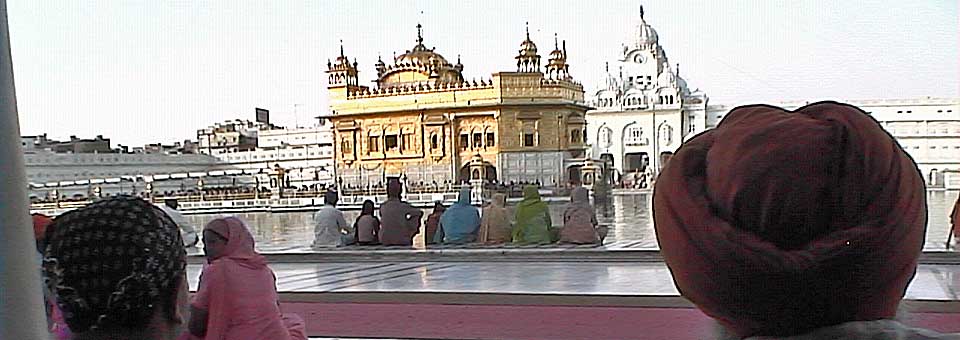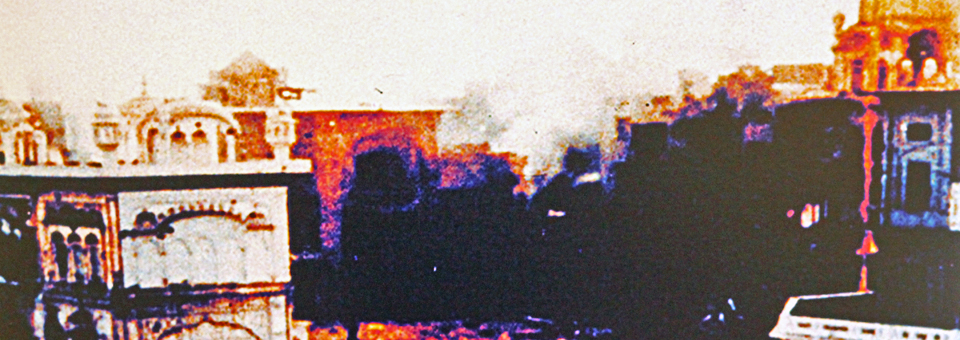Whether you are in favour or opposition to the building of a memorial for those killed in 1984’s Operation Bluestar is a question that is keeping us from tackling the genuine problem. The real issue here is one that we have seen over time – those places or sites related to an episode from the rich history of the Sikhs is being deliberately or intentionally rebuilt and signs of what actually happened in the past are being polished away.
The culmination of events stemming from both political and religious issues in the Punjab before 1984 resulted in the attack of the Indian army on the Golden Temple complex in June 1984. The destruction of Sri Akaal Takht Sahib and Sri Darbar Sahib was a clear signal by the central Government of India that the concerns of the people of Punjab were of no relevance and that they would have to abide by orders dictated from Delhi. Punjab was demanding a restructuring of governance by redefining Centre-State relations so that states could have more control. Particular to Punjab, there were other problems: the lack of a State capital; areas pledged to Punjab during formation not yet aligned to it (still not so); the creation of a separate High Court; control of State river waters; linguistic rights; and, many other inconsequential matters including the naming of trains and the relay of Gurbani from Sri Darbar Sahib. The main opposition party in Punjab, the Shiromani Akali Dal started the people’s agitation under the banner of a Dharam Yudh morcha. The central Government of that time, under the Congress Party opposed all demands. It was in this movement that Sant Jarnail Singh Bhindrawale emerged as the main force and gave rise to an upheaval amongst the Sikh masses, mainly the young. To curb this growing awakening and rightful protest, in June 1984 the Indian Government ordered the armed forces to attack the Golden Temple complex and strike at the head quarters of the movement.
Following the destruction and pillage of Sri Akal Takht Sahib, the first step of Government was to rebuild the complex so that no marks of history could be left behind. The Sikh masses did not accept that and as soon as strength was regained, the newly built structure was reduced to the foundations once more. At that very moment, our site depicting the history of those events of 1984 was destroyed under the banner of rebuilding, first by the Government and later by our own leadership, rather than looking at resolving the causes behind those events and preserving the history intact for future generations.
Now after such a long time the issue has again resurfaced. This new memorial with only a religious significance has been approved by the governing party to polarise the Sikhs so that we move away from the events of 1984, without going into the reasons and causes of what came before it and what resulted after. Any memorial should have answers to those causes and the actual events that are being commemorated in a true sense not in a projected manner. Those main issues on which the people of Punjab stood up are still unresolved and the state is losing all hope. Everyone wants to move out and so does industry. Farming is losing appeal among younger generations. No creativity is visible in people’s minds or even in the governing classes. Everybody is trying their level best just to emigrate. Is the memorial going to put any hope or strength in the mindset of Punjab’s people? Will their response to the way they are being governed change? I think not, all that is being achieved is to deflect from causes and issues pertaining to the well-being of the people of Punjab in general and Sikhs in particular.
The building of this memorial is being projected as a great achievement by the Sikh clergy and those Sikhs who are now governing the SGPC and state affairs. Certain organisations claiming to be the representative wing of the Sikhs, who once stood up in rebellion and suffered during the State’s onslaught, are also vigorous in support. But the real issue is elusive from the conversation they are having.
Is the building of this memorial a sign of success or a symbol of our long and ongoing subdued state? The new Gurdwara in the shape or name of a memorial is not the Sikhs panacea, but a sign of the hollowness of our leadership and the weakening of our strength. At the present time, the cross roads on which Sikhs have been standing for so long are gaining more avenues rather than opening into a clear pathway for deeper understanding in the future and greater thought creation. My question is not whether the memorial should be built, but whether we understand the relevance in political terms of what is being done, rather than being clouded by religious overbearing.






